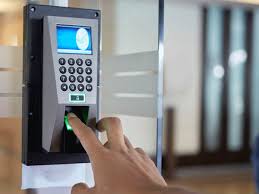Access Control System Installation: Enhancing Security with Advanced Technology. Leave a comment

Access Control System Installation: Enhancing Security with Advanced Technology
In today’s world, security has become a top priority for many businesses, organizations, and homeowners. The need for enhanced security measures has led to the adoption of advanced technologies such as access control systems. Access control systems are electronic security systems that are designed to regulate access to a physical space, device, or resource. These systems can be used to control entry points, monitor activity, and restrict access to sensitive areas.
If you’re considering installing an access control system for your home or business, you’re on the right track towards enhancing your security. In this blog post, we’ll discuss the most common keywords associated with access control system installation and provide insights into what you need to know.
Access Control System
An access control system is an electronic system designed to regulate access to a physical space, device, or resource. This system is used to control entry points, monitor activity, and restrict access to sensitive areas. Access control systems are available in different types, including card reader, biometric systems, proximity reader, keypad, and others.
Installation
Access control system installation is a process of setting up an electronic security system to control access to a physical space or resource. This process includes setting up the access control panel, installing access control devices such as card readers, and configuring the access control software.
Security
Security is the primary reason why access control systems are installed. These systems enhance security by regulating access to sensitive areas, monitoring activity, and providing access control reports.
Entry Points
Entry points are the physical locations where access control systems are installed. These include doors, gates, turnstiles, and other entry points.
Card Reader
A card reader is an access control device that reads data from a card or smart card to grant or deny access. Card readers can be used in combination with other access control devices such as keypads, biometric readers, or proximity readers.
Biometric Systems
Biometric systems are access control devices that use a person’s unique physiological or behavioral characteristics to grant or deny access. Examples of biometric systems include fingerprint readers, iris scanners, and facial recognition systems.
Proximity Reader
A proximity reader is an access control device that uses radio frequency identification (RFID) technology to grant or deny access. Proximity readers are used in combination with access control cards or key fobs.
Keypad
A keypad is an access control device that requires a user to enter a code to grant or deny access. Keypads can be used as standalone devices or in combination with other access control devices.
CCTV
Closed-circuit television (CCTV) is a video surveillance system that is used to monitor activity in a physical space. CCTV can be integrated with access control systems to enhance security.
Electric Lock
An electric lock is a type of lock that is controlled electronically. Electric locks can be integrated with access control systems to provide remote access control.
Magnetic Lock
A magnetic lock is a type of electric lock that uses magnetic force to lock or unlock a door. Magnetic locks can be integrated with access control systems to provide remote access control.
Door Access
Door access is the ability to control access to a door using an access control system. Door access can be granted or denied based on the access control settings.
Intercom Systems
Intercom systems are communication systems that are used to allow people to communicate with each other. Intercom systems can be integrated with access control systems to provide remote access control.
Access Control Software
Access control software is a program that is used to manage access control devices, settings, and reports. Access control software can be installed on a computer or hosted in the cloud.
Access Control Panel
An access control panel is a
centralized control unit that manages access control devices and settings. The access control panel is connected to the access control devices and the access control software.
Access Control Device
An access control device is a physical device that is used to regulate access to a physical space, device, or resource. Examples of access control devices include card readers, biometric readers, proximity readers, and keypads.
Keyless Entry
Keyless entry is the ability to access a physical space, device, or resource without the need for a physical key. Keyless entry can be achieved using access control devices such as card readers, biometric readers, or proximity readers.
Electronic Access
Electronic access is the ability to access a physical space, device, or resource using electronic means. Electronic access can be achieved using access control devices such as card readers, biometric readers, or proximity readers.
Access Control Technology
Access control technology refers to the various technologies used in access control systems. These include card readers, biometric systems, proximity readers, and keypads.
RFID
Radio frequency identification (RFID) is a technology used in proximity readers to grant or deny access. RFID tags or cards are used to identify the user and grant or deny access.
Access Control Solutions
Access control solutions are systems or services that provide access control to physical spaces, devices, or resources. Access control solutions may include hardware, software, installation, and maintenance.
Access Control Companies
Access control companies are organizations that specialize in providing access control solutions to businesses, organizations, and homeowners. These companies may offer hardware, software, installation, and maintenance services.
Access Control Installers
Access control installers are professionals who specialize in installing access control systems. These professionals have the knowledge and experience to set up access control systems in a variety of environments.
Access Control Integrators
Access control integrators are professionals who specialize in integrating access control systems with other security systems such as CCTV, alarm systems, and intercom systems. These professionals can help to enhance the overall security of a property by integrating different security systems.
Access Control Vendors
Access control vendors are organizations that supply access control hardware and software to businesses, organizations, and homeowners. These vendors may offer a range of products and services to meet different security needs.
Access Control Equipment
Access control equipment refers to the physical devices used in access control systems. This may include card readers, biometric readers, proximity readers, keypads, access control panels, and other devices.
Access Control Systems for Business
Access control systems for business are designed to provide enhanced security for commercial properties. These systems may include features such as access control reports, integration with other security systems, and remote access control.
Access Control Systems for Homes
Access control systems for homes are designed to provide enhanced security for residential properties. These systems may include features such as remote access control, keyless entry, and integration with other home security systems.
Access Control for Small Businesses
Access control for small businesses is designed to provide affordable access control solutions for small businesses with limited budgets. These solutions may include standalone access control devices or cloud-based access control systems.
Access Control for Large Businesses
Access control for large businesses is designed to provide scalable access control solutions for businesses with multiple locations or a large number of employees. These solutions may include networked access control systems or cloud-based access control systems.
Networked Access Control
Networked access control is a type of access control system that is connected to a network. Networked access control systems allow for centralized management and reporting of access control data.
Cloud-based Access Control
Cloud-based access control is a type of access control system that is hosted in the cloud. Cloud-based access control systems allow for remote access control and management of access control data.
Mobile Access Control
Mobile access control is a type of access control system that allows
users to access a physical space or device using their mobile device, such as a smartphone or tablet. This type of access control system may use technologies such as Bluetooth or Near Field Communication (NFC) to grant or deny access.
Access Control Authentication
Access control authentication refers to the process of verifying a user’s identity before granting access to a physical space, device, or resource. Authentication may be achieved using a range of technologies, such as passwords, PIN codes, biometric authentication, or two-factor authentication.
Access Control Authorization
Access control authorization refers to the process of determining what level of access a user is granted once they have been authenticated. Authorization may be based on factors such as the user’s job role, level of clearance, or time of day.
Visitor Management
Visitor management is a component of access control systems that is used to manage visitors to a property. This may include features such as visitor registration, visitor tracking, and access control for visitors.
Access Control Reports
Access control reports provide valuable data and insights about access control activity. Reports may include information such as access attempts, successful and unsuccessful access attempts, and user activity.
Access Control Policies
Access control policies are a set of rules and guidelines that dictate how access control systems should be used and managed. Access control policies may include guidelines for password management, user access permissions, and security protocols.
Access Control Training
Access control training is essential for users of access control systems to ensure they understand how to use the system correctly and securely. Access control training may cover topics such as system navigation, user access permissions, and security best practices.
Physical Access Control
Physical access control refers to the use of physical barriers, such as doors or gates, to control access to a physical space or device. Physical access control may be combined with electronic access control to provide an enhanced level of security.
Logical Access Control
Logical access control refers to the use of software or electronic measures to control access to digital resources, such as computer systems or databases. Logical access control may include features such as passwords, authentication, and authorization.
Biometric Access Control
Biometric access control uses unique biological traits, such as fingerprints, facial recognition, or iris scans, to grant or deny access. Biometric access control provides an enhanced level of security as biometric data is difficult to forge.
Card Access Control
Card access control uses physical cards, such as RFID cards or magnetic stripe cards, to grant or deny access. Card access control systems are commonly used in commercial or institutional settings.
Keypad Access Control
Keypad access control uses a physical keypad to grant or deny access. Keypad access control systems may use PIN codes or passwords to authenticate users.
Proximity Access Control
Proximity access control uses a physical device, such as a key fob or smartphone, to grant or deny access based on the proximity of the device to the access control device.
Access Control Encryption
Access control encryption refers to the use of encryption to protect access control data from unauthorized access or interception. Encryption may be used to secure access control data in transit or at rest.
Access Control Firewalls
Access control firewalls are used to protect access control systems from unauthorized access or attack. Access control firewalls may be implemented as hardware or software solutions.
Access Control Monitoring
Access control monitoring refers to the process of monitoring access control systems to detect and respond to security incidents. Access control monitoring may include features such as intrusion detection, system alerts, and real-time monitoring.
Conclusion
Access control systems play a crucial role in providing security for physical spaces, devices, and resources. By using advanced technologies such as biometric authentication, card access control, and cloud-based access control, businesses and homeowners can protect their property and assets from unauthorized access. With the help of access control companies, installers, and integrators, users can choose



